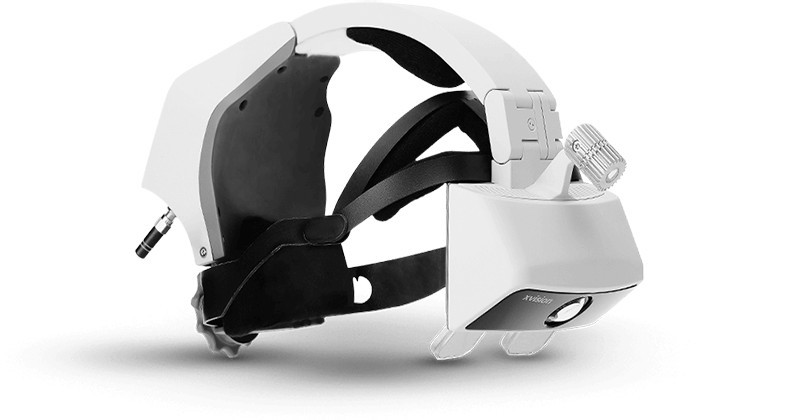
John Lucey, M.D. has been concerned about detection of joint component loosening for decades. As a recently retired orthopaedic surgeon, he returned to research that he started while in training 40 years ago to form Synergistic Biosensors. This company is working with RTI International and the North Carolina State University Department of Computer Sciences to develop a patent-pending system that detects micron shifts through an implanted sensor.
Sepsis, asepsis and wear and tear lead to component loosening. The sooner that abnormal loosening is detected, the sooner action can be taken. However, today’s various radiographic approaches leave too much interpretation by the doctor, Dr. Lucey says.
The goal of his system is described as “a micro sensor biomarker rigidly fixed to surrounding bone, placed close to but not in contact with a prosthesis or implant. The biomarker senses the distance, measured in microns, between itself and the prosthesis. The biomarker communicates the distance data to a contiguous wireless transmission system, which in turn communicates wirelessly with an external interface system. The external interface system, located outside the body, wirelessly powers the biomarker and the wireless transmission system. Data collection may be done on a massive scale, since each external interface system may connect with the internet.”
While tracking motion is the first step, Dr. Lucey thinks that tracking the chemical environment would be the natural next step in early infection detection.
As of December 2017, Dr. Lucey and his team had made early inquiries with FDA and were finalizing proof of concept.
BONEZONE: Tell us about your technology.
Dr. Lucey: There’s no doubt that micro sensors are the future of orthopaedics. We’re working on motion and looking for early loosening of components, but we can also use motion as an early detector to monitor fracture healing. There are always outliers, like delayed unions and non-unions that are often hard to pick up on an x-ray, that should be quite easy to monitor with micro sensors.
Also, this opens up an avenue to develop chemical sensors. For example, noting which chemicals are released in the periprosthetic region when an infection starts, or which chemicals are mediated in the periprosthetic region when aseptic loosening starts. We can build a sensor that can monitor not only motion, but also the chemical environment around the prosthesis, which I think would be revolutionary in orthopaedics.
BONEZONE: How far are we from seeing devices on the market that are paired with sensors?
Dr. Lucey: Once the proof of concept is finalized, the next step is to miniaturize it. That’s when the heavy lifting comes. But if we can have a bench model with a wireless system that does what we want it to do, according to the patent, then I think it will open the gates to allow this technology to advance rapidly [within the next couple of years].
BONEZONE: What challenges lie ahead?
Dr. Lucey: The challenge is funding. We are looking into grant proposals now, and even private industry. There seems to be a significant interest from the major orthopaedic companies, but they want something that is in a box and wrapped up with ribbon, and then they’ll get intimately involved. It’s that heavy lifting phase of any startup company—where do you get the funds to get the ball rolling? There seem to be avenues in the research grant realm that we’ll pursue.
One of the issues is funding from an insurance standpoint, whether or not this will add value to a hip procedure. Why should an insurance company fund the extra expense of putting in a sensor? I’ve thought hard about that. If you have an issue like a prospective infection in the hip, the cost of working that up is really substantial. All the lab studies—x-rays, bone scans, MRIs—don’t give you the answer; they approximate a diagnosis. The real diagnosis is a clinical judgment. But if you can solidify parameters—for example show that a prosthesis has moved more than the average prosthesis (this points to the need of a database)—it enhances your diagnostic soundness from an orthopaedic standpoint.
BONEZONE: Do you know of others who have patented or are developing similar technology?
Dr. Lucey: There is a group in Rostock, Germany that is interested in vibrational analysis. I’m not sure how far they’ve gotten in terms of micro sensors, but they are looking at it. My sense was always that vibrational analysis is a good way to look at things, but so many influences can alter vibrational analysis—the patient could gain 20 pounds, for example. Vibrational analysis doesn’t have the sensitivity in the micron range I’m looking for. If you can say within 20 to 50 micron that you have motion, then that is a solid figure to hang your hat on.
CL
Carolyn LaWell is ORTHOWORLD's Chief Content Officer. She joined ORTHOWORLD in 2012 to oversee its editorial and industry education. She previously served in editor roles at B2B magazines and newspapers.




